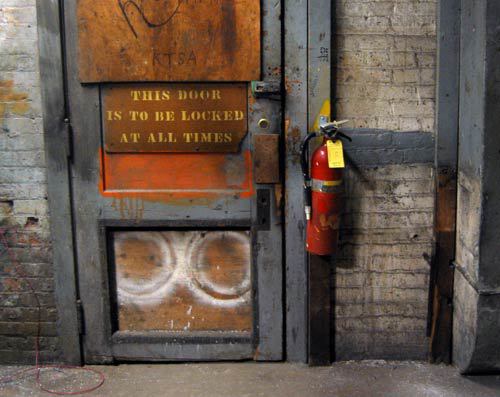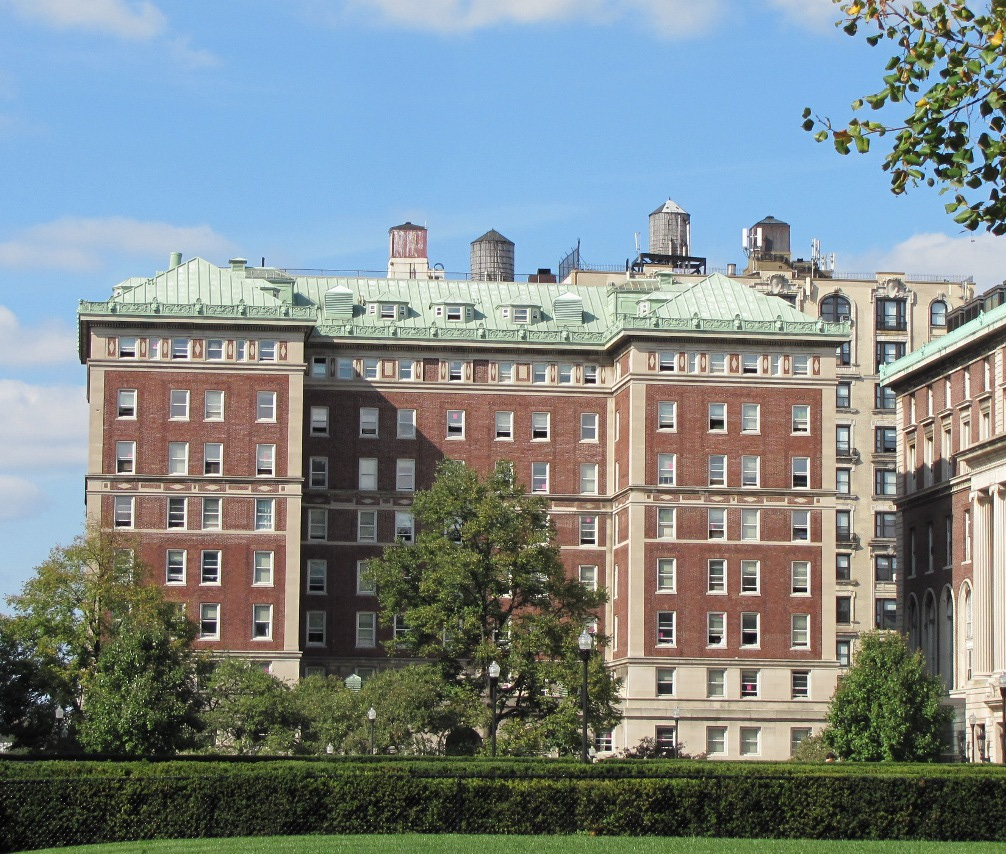The Secret Manhattan Project Tunnels at Columbia
"This was largely a secret until that damned book [Once a Spy] was published."—Columbia official.
The eighteen-year-old who would become known in Columbia lore as Poughkeepsie Pete enrolled at the university’s School of Engineering in 1990. From his first day on campus, wherever he went, he marveled at the possibility that the hallowed Manhattan Project tunnels might be beneath his feet. Little was known about the complex beyond its role in the Allied victory. Nothing about the offices and laboratories had been declassified. Entry was forbidden. The facility became Poughkeepsie Pete’s Holy Grail.
He learned that in years past, likeminded students had pried their way past boarded-up parts of Furnald Hall’s basement, where the famous grocery store had been. Those who made it furthest entered a dark, cement tunnel, empty but for a few wagon wheel-sized wooden cable spools stamped U.S. ARMY. After a hundred feet, the tunnel dead-ended. The students turned back, generally thrilled at getting as far as they had.
Trying a brand new tool, the Worldwide Web, Pete found a site with a blueprint of the entire complex. Late one night, he snuck past a Campus Security guard and into the crew team’s indoor rowing tank facility, across the quad from Furnald Hall. He hammered through what the same Web site had promised would be a thin plaster wall in the basement.
At the back of a defunct boiler room, using a technique also provided by the site, he picked the lock on what appeared to be a closet door. It opened onto a short tunnel at the end of which he discovered a full-sized laboratory, seemingly frozen in time from 1945. The built-in tables and cabinets had been stripped of all equipment and instruments, save a dusty cathode ray tube. The cathode ray tube later drew dozens of awestruck classmates to his dorm room, where he held court with his tale of his experience. For years thereafter, Columbia students dodged Campus Security guards to visit “Al’s,” as the lab became known—Al was Albert Einstein.
A second-year medical student from California thought they were fools. Why didn’t they find it odd, he asked, that the same Web site that mysteriously provided the blueprint also provided the method to pick the lock? Or that of the hundreds of kinds of locks, the formidable Manhattan Project complex was protected by perhaps the simplest, a basic pin and tumbler? He suspected the laboratory was real, utilized as a decoy by someone with extensive knowledge of the complex, their aim being to divert students from the relatively mundane tunnel they’d breached so often in the past. Although the medical student never had given much thought to the Manhattan Project complex before, he found himself unable to stop wondering what was going on there now.
Determined to find out, on Christmas Eve, 1990, at 11:45 p.m., he accessed Furnald Hall’s basement by prying open the shaft of an outmoded service elevator and rappelling down. He sprung the old employee washroom door’s intricate lock with a quiet surgical drill. Leaving the door ajar, he crept into the tunnel.
Furnald Hall at Columbia University
The tunnel ended after about a hundred feet, at a grimy cinder block wall. He suspected the rusty ventilation grate there, wadded with a half-century’s worth of dust, was really a door—the dead end of a tunnel was an odd place for a ventilation grate. If so, the door probably opened with an iris scanner concealed somewhere. Even if he knew where, the odds were one in 100,000 at best that his eyeball would open it. If he had brought a torch and five or six tubes of acetylene, or a grenade launcher, the odds would have been a bit better. These were still odds, he thought, that the people inside the complex could live with.
He concealed himself into the core of one of the giant cable spools. He planned to stay the entire weekend, during which time he would not eat. He would drink a minimal amount of a citrus beverage he’d made after reading about it in one of his books on desert survival. The beverage was stored in the small rubber bladder he’d sewn onto his backpack. He’d taken preventive measures so that his bodily waste would be limited to urine, discharged into a tube and stored in the rubber bottle secured to his thigh by spandex bicycling shorts. Just being balled up in the cable spool for so many hours might have been torture, but he’d spent three weekends rehearsing in his small clothes closet. Also he viewed self-deprivation as something of a sport.
One of the labs beneath Pupin Hall
His plan hinged on his theory that the tunnel’s entry door was outfitted with at least one motion sensor. His backpack contained forty-eight small lab rats. At precisely 12:00 a.m., four minutes after his arrival, he sent the first of his rats scurrying out of the cable spool, through the open tunnel door and into the Furnald basement, where he’d placed a hunk of cheddar cheese. At exactly every hour on the hour thereafter, he sent another rat on the same course. The first rat was meant to simulate the motion his own departure. The subsequent rats were intended to make whoever was in the Manhattan Project complex conclude that the motion sensor had gone haywire, then come out to do something about it.
At 9:07 the next morning, the ventilation grate swung outward and two men in business suits emerged from the opposite side. The medical student revealed himself to them and owned up to what he’d done. They invited him into the complex. Although not one for emotional displays, he found himself pumping a fist.
While gloomy, the labyrinthine facility dazzled him. Racing the Nazis to develop “the gadget,” Oppenheimer, Fermi, Einstein and company never got around to decorating or even painting the concrete walls. The medical student would learn that when the current occupants moved in, they had no more time or inclination. But in the early ’80s, on one of the chaotic August days that Columbia students all arrived on campus, the custodial alley behind Furnald Hall received a truckload of items confiscated by the DEA from a local drug kingpin—tables and chairs and fixtures befitting the Palais de Versailles in jarring combination with furnishings better suited to Las Vegas. Typical of the resulting scheme was the conference room, with an elegant antique Persian carpet and a contemporary black lacquer table inlaid with a shiny soaring hawk rendered in shiny silver, gold and bronze.
At the head of the table on the morning of December 25, 1990, sat the de facto CIA station chief, Drummond Clark, then in his mid-forties. When brought into his stern glare, the medical student considered for the first time that he might be killed.
“We’re undecided what to do with you as yet,” Drummond said. “Some of my colleagues have suggested that, as a penalty, you have to work here.”
Read more of Once a Spy:




